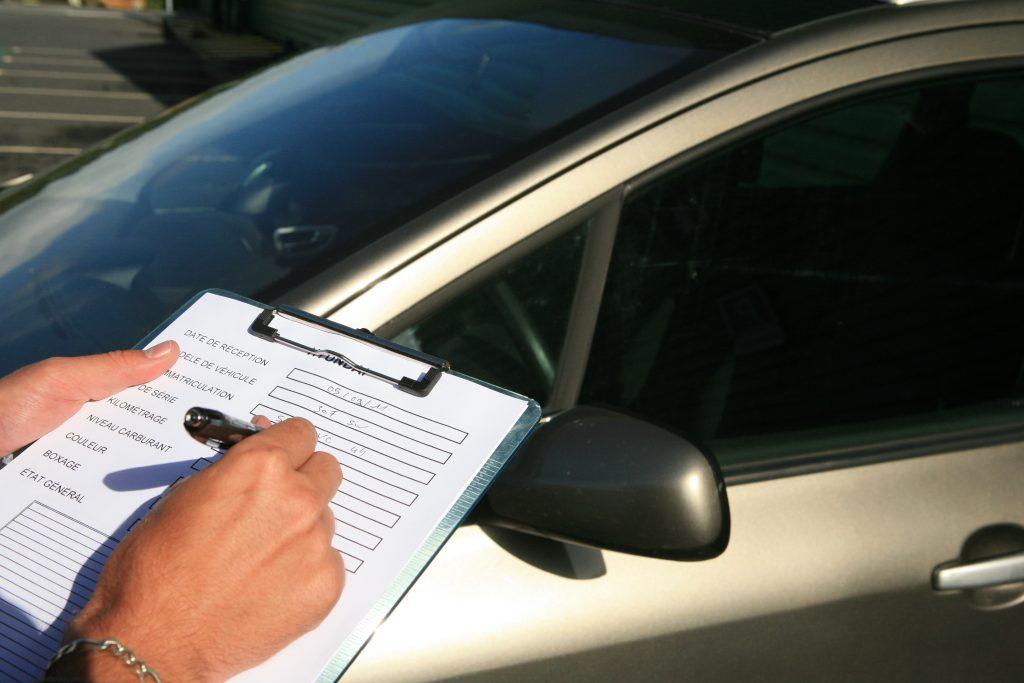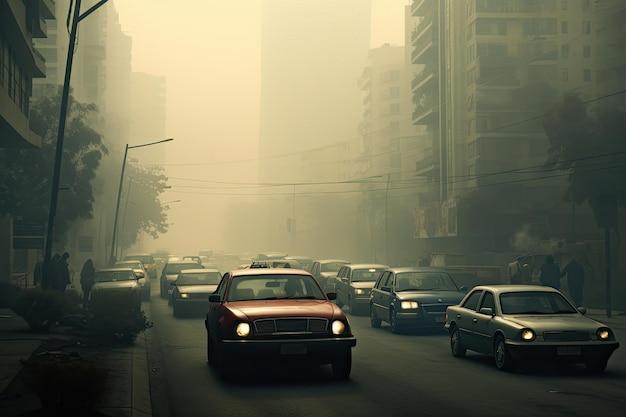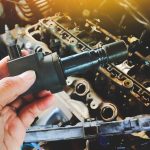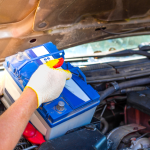As the seasons change and urban areas grapple with rising air pollution levels, driving in smog can become an all-too-common challenge. Whether it’s a thick blanket of fog or haze caused by pollution, navigating through reduced visibility can be daunting and, at times, dangerous. That’s why it’s essential to equip yourself with the right knowledge and techniques to ensure safe travels. In this article, we’ll explore practical tips to enhance your driving experience in smoggy conditions.
From adjusting your driving style to optimizing your vehicle’s features, we aim to provide you with friendly and straightforward advice to keep you safe on the road. So buckle up, and let’s dive into the best practices for driving in poor visibility!
Table of Contents
- Understanding Smog and Its Impact on Driving Safety
- Preparing Your Vehicle for Low Visibility Conditions
- Essential Techniques for Navigating Through Smog
- Staying Calm and Focused: Mindset Strategies While Driving in Poor Visibility
- Q&A
- Final Thoughts

Understanding Smog and Its Impact on Driving Safety
Smog is a complex mixture of air pollutants that can significantly reduce visibility and pose serious risks for drivers. The combination of fog, smoke, and chemicals from urban areas creates a thick haze that can envelop cities, making it challenging to see even a few meters ahead. During such conditions, it’s crucial for drivers to remain vigilant and adapt their driving habits to ensure safety on the road. Keeping to the speed limit, using low-beam headlights, and maintaining a safe following distance are essential practices in these poor visibility situations.
Aside from adjusting speed and visibility settings, understanding how smog affects vehicle performance is vital. Reduced visibility can lead to quick decision-making and sudden maneuvers that could compromise safety. Drivers should also be aware of how smog can impact air quality inside the vehicle, potentially causing irritation or discomfort for passengers. To keep everyone safe and comfortable, consider these tips:
- Use windshield wipers: To maintain clear visibility.
- Avoid distractions: Limit phone use and keep focus on the road.
- Plan routes: Opt for main roads that are likely to be safer and better lit.
- Check weather updates: Stay informed about smog levels and conditions.

Preparing Your Vehicle for Low Visibility Conditions
When , it’s essential to ensure that all your safety features are in optimal condition. Start by checking your headlights and taillights; clean any dirt or grime that can obstruct their brightness and replace any burnt-out bulbs. Consider investing in high-intensity bulbs that can illuminate the road better in murky conditions. Additionally, inspect your windshield wipers and replace them if they are worn to maintain visibility during rain or fog. Using a high-quality windshield washer fluid can also enhance clarity when driving through smog.
It’s not just the exterior that needs your attention; take time to prepare the interior of your vehicle too. Make sure your defrosters and climate controls are functioning correctly to prevent fogging up the windows. Keep your dashboard clear of clutter that could distract you while driving. Here’s a quick checklist to guide you:
- ✔️ Headlights and taillights cleaned and functioning
- ✔️ Worn windshield wipers replaced
- ✔️ High-quality windshield washer fluid added
- ✔️ Defrosters tested for proper operation
- ✔️ Dashboard cleared of distractions
Read More: 5 Tips for Getting the Best Price at a Car Dealership

Essential Techniques for Navigating Through Smog
When driving in smog, it’s crucial to maintain a heightened level of awareness. First and foremost, reduce your speed. This not only gives you more time to react to unexpected obstacles but also helps in avoiding skidding or losing control of your vehicle. Additionally, increase your following distance from the car in front of you; a distance of four seconds is advisable under smoggy conditions. This allows ample time to brake safely, should the need arise.
Equipping your vehicle with proper lighting is another essential technique. Make sure to activate your low-beam headlights to enhance visibility not just for yourself, but also for others on the road. It’s also wise to use your fog lights if available, as they help illuminate the road immediately in front of you. Keeping your windshield and windows clean is vital, as smudges can further impair visibility. You may find the following tips helpful:
- Use windshield wipers: Ensure wipers are in good condition to clear any moisture.
- Utilize defrosters: Keep your windows clear of fog by using the defrost setting.
- Avoid sudden maneuvers: Smooth and gradual steering changes help maintain control.

Staying Calm and Focused: Mindset Strategies While Driving in Poor Visibility
Driving in poor visibility conditions, such as during smog, can lead to heightened anxiety and stress. To counteract these feelings, it’s essential to adopt a calm and focused mindset. Begin by taking a few deep breaths before you set off. This simple technique helps to relieve tension and enhances concentration. Remember to stay positive and remind yourself that you can handle the situation. Prepare a mental checklist of essential items to keep in your vehicle, such as your headlights, fog lights, and windshield wipers, ensuring they are all in working order. This preparation can instill a sense of control and readiness.
Another effective approach is to establish a driving routine that promotes safety and reduces distractions. Consider implementing the following strategies into your driving habits:
- Limit distractions: Put your phone on silent mode and avoid any multitasking.
- Adjust speed: Drive slower than usual to improve reaction time.
- Increase following distance: Maintain a greater distance from the vehicle ahead to allow for sudden stops.
- Use visual cues: Focus on the road markings and any available signs to guide your way.
Incorporating these techniques can help create a safe and calm environment while navigating through foggy conditions, allowing you to reach your destination with confidence.
Q&A
Q&A: Driving in Smog - Top Driving Tips for Poor Visibility
Q: What is smog and how does it affect driving conditions?
A: Smog is a type of air pollution characterized by a combination of smoke, fog, and chemical pollutants, often resulting from vehicle emissions, industrial discharges, and weather conditions. It can significantly reduce visibility on the road, making it challenging for drivers to see other vehicles, traffic signals, and road signs.
Q: How can I prepare my vehicle for driving in smoggy conditions?
A: To prepare your vehicle, ensure that your headlights, taillights, and turn signals are functioning properly and are clean. Regular maintenance checks, including windshield wipers and fluid levels, are also essential. Consider keeping a spare set of wiper blades in your vehicle, as they can be a lifesaver in low-visibility conditions.
Q: What should I do if I find myself driving in heavy smog?
A: If you encounter heavy smog while driving, it’s best to slow down and increase your following distance. This allows for more reaction time in case of sudden stops. Use your low-beam headlights to improve visibility without causing glare, and avoid using high beams, as they can reflect off the smog and make it even more challenging to see.
Q: Is it safe to drive during severe smog conditions?
A: While it may be necessary to drive during severe smog, it’s always best to assess the situation first. If visibility is extremely poor and conditions are hazardous, consider postponing your trip or using public transportation if possible. Your safety is the top priority!
Q: How can I improve my visibility while driving in smog?
A: To enhance your visibility, keep your windows clear by using your defroster and wipers as needed. Avoid distractions in the vehicle, like loud music or mobile devices, so you can focus solely on the road. Additionally, look for the lanes marked by road lines or use the outlines of the road edges to guide you.
Q: Are there specific driving techniques I should use in smog?
A: Yes! Use the “four-second rule” for following distance, which means you should stay at least four seconds behind the vehicle in front of you. When approaching intersections, be cautious and look for other vehicles and pedestrians. Always be prepared for unexpected stops or changes in traffic patterns.
Q: What should I do if I get lost in poor visibility?
A: If you find yourself lost in smog, stay calm. Pull over to a safe location where you won’t obstruct traffic, and use your phone’s GPS or a navigation app to determine your location. If you’re unable to navigate, it may be wise to wait until visibility improves before attempting to drive further.
Q: How can I protect my health while driving in smog?
A: To protect your health, keep your car windows closed to minimize exposure to outdoor air pollution. If you have to drive during smoggy conditions, consider wearing a mask to filter out harmful particles. Keep the interior of your vehicle ventilated by using the air conditioning system on recirculate mode when possible.
Q: Where can I find real-time information about air quality and smog conditions?
A: You can find real-time air quality information through various online resources, including government environmental agencies, weather websites, or mobile apps designed to track air quality. Staying informed can help you plan your travel accordingly.
Driving in smog may be challenging, but with the right precautions and awareness, you can stay safe on the road. Always remember to prioritize your safety and the safety of others while navigating these conditions!
Final Thoughts
navigating through smog can be a daunting experience, but with the right strategies and precautions, you can ensure a safer journey. Remember to slow down, use your headlights wisely, and maintain a safe following distance to enhance visibility and response time. Regular maintenance of your vehicle’s lights and wipers is crucial, and staying informed about local air quality can help you plan your trips more effectively. By embracing these tips and staying vigilant on the road, you’ll be well-equipped to handle any poor visibility conditions that come your way. Safe travels, and may your journeys always be clear and smooth!











